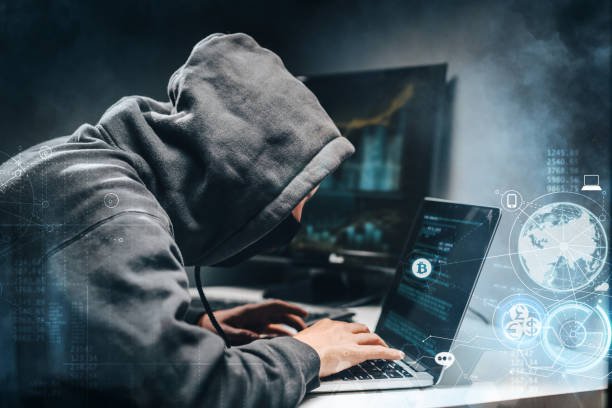The need for stringent regulations on deepfakes has also increased with advancements in deepfake technology. Deepfakes, manipulated photorealistic media, have resulted in immense risks regarding spreading misinformation, harassment, and fraud. Governments across the world are also coming forward with deepfake legislation to fight all these problems.
Technologies have a very crucial role in enforcing such regulations by allowing the detection, tracking, and prevention of crimes related to deepfakes. This way, regulatory authorities can effectively handle the fast-emerging threat of deepfakes while ensuring responsible AI usage. Now, let us look into the various roles of different technologies in enforcing deepfake legislation and what it will spell for society.
Understanding Deepfake Regulations and Their Importance
Deepfake regulations refer to the laws and policies devised to control the development and distribution of deepfakes. Deepfakes have progressed much faster than the regulation of such technologies, and hence an elaborate piece of legislation on deepfakes is badly needed urgently. Governments now are waking up to realize how much damage deepfakes pose, especially in the political world- manipulative videos that spread false information and alter public opinion.
For instance, last year, the Deepfake Act was introduced in the United States to criminalize malicious deepfakes for those who create these with some form of deceptive intent. Thus, it is indispensable for individuals and institutions alike to understand these regulations as they navigate the increasingly manipulated media landscape and digital content complexity.
Role of AI and Machine Learning in Detection
Artificial intelligence and machine learning are frontline leadership technologies that are constantly enforcing new deepfake regulations. Through these, sophisticated detection algorithms can be developed to scan through video and audio content for potential manipulation signs. For instance, AI models will look at inconsistencies in the movements of a face or voice patterns, among other audiovisual clues of a deepfake.
These models become adept in detecting malicious content after training on massive amounts of genuine and deepfake media. Deepfake laws necessitate the application of detection technologies by law enforcement agencies as well as regulatory bodies so that both compliance and public safety against deepfake crimes are ensured. Finally, it is an integration of AI detection in social media platforms, which reduces the effectiveness of very harmful content spread among users.
Blockchain Technology for Traceability and Accountability
The use of blockchain technology forms one of the innovative solutions for enforcing deepfake legislation. It uses a decentralized ledger that assists traceability of digital content origins in an immutable record of creation and modification. Traceability is essential in identifying the sources of origin of deepfake videos and responsible creators of such malicious content.
For instance, where original media have been blockchain-based system registered and timestamped, such future alterations would then be visible and verifiable. As stricter regulations for deepfakes are established, blockchain technology’s adoption syncs with the accountability of creators towards content to prevent these deepfake crimes from happening. While this will facilitate compliance with the law, the approach also enables consumers to rely on the authenticity of digital media.
Collaborations Between Tech Companies and Regulators
To effectively implement deepfakes regulations, there is a need for synergy between tech companies and bodies of regulation. Many tech firms already work on detection and risk mitigation tools related to deepfakes. Such as developing customized systems to detect deepfakes, for example, in collaboration with AI developers and law enforcement agencies according to extant deepfake laws.
Additionally, the developing tech companies can collaborate in making the public aware of the risks of deepfakes and how to identify them. Through such collaboration, not only does the legislation in terms of enforcing deepfakes get stronger, but the responsible use of technology also promotes responsible use. Hence, regulators working hand in glove with tech firms can take steps toward enhancing a safer digital environment.
Public Awareness and Education Initiatives
Thus, education and a higher level of public awareness of deepfake regulations are important measures in making such regulations effective. Awareness programs will enlighten individuals as to what deepfakes are, how dangerous they can be, and why following deepfake laws is important. In other words, by raising awareness about the dangers involved with deepfake content like misinformation and identity fraud, educational programs educate users about what kinds of media are suspicious so that they may raise an alarm.
In addition, education and educational programs can provide transparency about the applied technologies used for detection and therefore be able to enhance the capabilities of the public to be able to distinguish true from false. Public awareness campaigns have a very important role in forming a culture of responsibility and vigilance against deep fake crimes as legislation about deep fakes is in constant development.
Future of Deepfake Regulations and Technology
As technology evolves, so will the regulatory environment over deepfakes. Future regulations would implement these advancements in AI, machine learning, and blockchain for advanced detection and accountability practices. Additionally, this integration would make international cooperation and coordination crucially important as deepfake laws begin to take root around the world. Integration of emerging technologies into the regulatory environment will bring along aspects that ensure legislation will be in place in line with technological advancements. Further, efforts to public education with ongoing critical contributions will be essential for a technically enlightened citizenry with the ability to filter through the labyrinth of digital content. Ultimately, the future of deepfakes in regulation depends upon the complementarity between technology, legislation, and public awareness.
Wrapping It Up
Since technology has its role, it will be forcing severe regulations with deepfake. The increasingly apparent threat of false media can only be effectively battled by society if it succeeds in developing advanced methods for detection, and blockchain traceability, and if the tech and regulatory sides cooperate better towards reducing crimes linked with deepfakes and responsibly utilizing this massive technology. As legislation keeps on developing regarding deepfakes, education, and awareness will form an indispensable aspect of creating a safer digital landscape. Collaborating with technology, brings us closer to an era where deepfakes are used responsibly, openly, and to everyone’s advantage.


